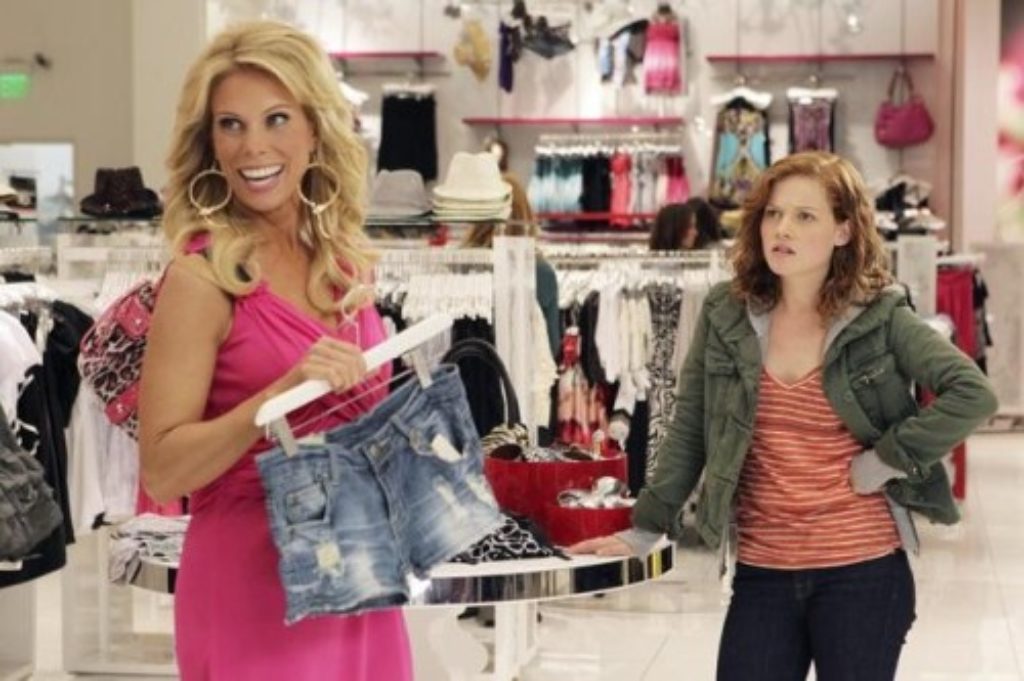
House of David
House of David bringing David’s dramatic story to life, recounting the rise of his house and the downfall of King Saul’s.

The suburbs have become one of the entertainment industry’s favorite geographical whipping boys. Scriptwriters can’t stand ’em, it seems, despising all those cookie-cutter homes and manicured lawns and neighbors sporting phony smiles. The suburbs are infested with fake, these scriptwriters tell us—shiny home-association-approved veneers that cover angst and despair and desperate housewives.
And, don’t you know it, if there’s one thing Hollywood can’t stand, it’s fake stuff!
Welcome to Chatswin, N.Y., home of ABC’s comedy Suburgatory. George Altman and his teen daughter, Tessa, moved to this alarmingly charming suburb from Manhattan after George found condoms in Tessa’s room. Everyone knows that teens in the suburbs never have premarital sex, so George decides Chatswin will give his daughter more congenial, less conjugal surroundings.
“It’s pretty ironic that a box full of rubbers landed me in a town full of plastic,” Tessa tells us in the pilot. Clearly, this worldly teen hates the place. A crazy night on the town in Chatswin? Tessa thinks it’d start with a pedicure at the mall and end with watching Jersey Shore.
And, given the stereotypes that abound on the show, Tessa would likely be right.
It’s not that Suburgatory glories in the greatness of city life. It repeatedly stresses that Chatswin is a safer, “nicer” place. And we can assume that, as the series trundles on, Tessa will gradually grow to like Chatswin—even if she never stops feeling vaguely superior to it. Mere episodes in, she’s already made friends—real, honest, kinda geeky friends, which conveniently separates them from the blingy blondes who seem to rule the town’s teen social circuit.
But even as the aforementioned scriptwriters half-heartedly attempt to admit that maybe the suburbs aren’t all bad, they do so with noses still firmly in air—while simultaneously embedded in gratuitous stereotyping. This reliance on stereotype is one of the things that makes Suburgatory incredibly annoying—if only because the trope is so well-worn as to be past the point of cliché. And Tessa, in her own way, may be just as misunderstood, according to The New York Times‘ Neil Genzlinger. He posits that Suburgatory’s creators don’t know anything more about urban teens than suburban ones.
The show doesn’t just feel false, though. It feels foul. Genzlinger wrote, “The setup—single parent, cheeky kid—feels Disneyish, but what comes out of these characters’ mouths isn’t anything Disney-endorsing parents would want their tweeners hearing.” Indeed, conversations can be flippantly sexual (Tessa refers to someone’s vagina in the pilot) and pocked with both profanity and sacrilegious-sounding goofiness. Costumes are skimpy.
(Editor’s Note: Plugged In is rarely able to watch every episode of a given series for review. As such, there’s always a chance that you might see a problem that we didn’t. If you notice content that you feel should be included in our review, send us an email at letters@pluggedin.com, or contact us via Facebook or Instagram, and be sure to let us know the episode number, title and season so that we can check it out.)
George and Tessa are disappointed to hear that their homeowners’ association won’t let them erect a working guillotine on their front lawn for Halloween. Association president Dallas Royce says that folks move to Chatswin to protect their children: “Why on God’s green earth would we scare the bajoozies out of them?” George responds, “You’re not protecting them. You’re warping them.” And he ends up convincing Dallas that it’s OK to have fun being scared. He later cuts the head off a dummy, much to the dismay of trick-or-treaters and their parents.
Meanwhile, Tessa’s friend Lisa believes Tessa is possessed by a dead classmate and tries to perform an exorcism (complete with a Bible, faux holy water and candles). George forces Dallas to watch The Exorcist, saying, “First time I saw this, I didn’t sleep without a crucifix for a month.” Tessa talks about arterial spray. In flashback, a dead body is wheeled out of an apartment. Mistaken for an intruder, George is punched.
Dallas wears hyper-revealing outfits. (A girl describes her outfit as that of a “slutty mushroom.”) Her husband away on business, Dallas seems to lightly flirt with George. Characters say “b‑‑ch” and “a‑‑”; they misuse God’s name a half-dozen or more times.

Paul Asay has been part of the Plugged In staff since 2007, watching and reviewing roughly 15 quintillion movies and television shows. He’s written for a number of other publications, too, including Time, The Washington Post and Christianity Today. The author of several books, Paul loves to find spirituality in unexpected places, including popular entertainment, and he loves all things superhero. His vices include James Bond films, Mountain Dew and terrible B-grade movies. He’s married, has two children and a neurotic dog, runs marathons on occasion and hopes to someday own his own tuxedo. Feel free to follow him on Twitter @AsayPaul.

House of David bringing David’s dramatic story to life, recounting the rise of his house and the downfall of King Saul’s.

What happens when ‘Star Wars’ meets anime-style plotlines and art styles? ‘Star Wars: Visions’ is the answer to that question.

Despite a strong cast and sharp writing, Apple TV+’s ‘Down Cemetery Road’ walks down the wrong road with its problematic content.

Despite some paranormal themes, ‘Vampirina: Teenage Vampire’ is about as squeaky clean as you can get. Well, for a show about vampires, anyway.